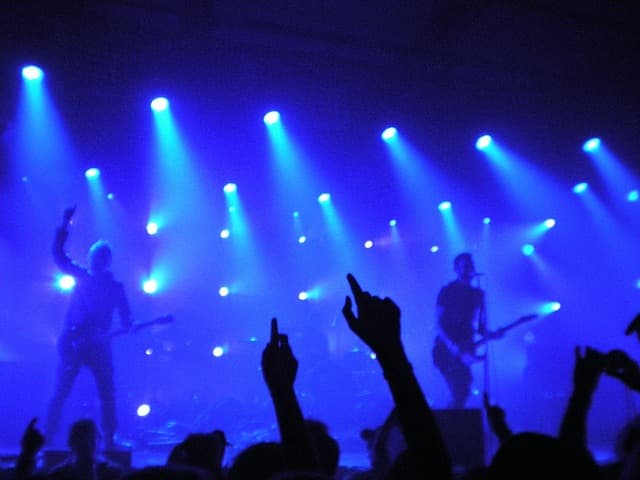The 1990s were the period of “crossovers” for metal – mixing and interpenetration with other styles of music. At that time many bands were formed that combined metal with classical symphonic music, folk music, progressive rock, gothic rock and other traditional genres.
Progressive metal
At the end of the 1980s progressive metal developed from the combination of progressive rock and various kinds of metal in the works of Dream Theater, Queensrÿche. Its distinctive features are the complex structure of compositions, bizarre musical sizes, unexpected rhythm changes, as well as the professional technique of playing the musical instruments. Progressive metal is characterized by long songs and conceptual albums. In the 1990s and 2000s the genre developed in the works of Ayreon, Symphony X and Opeth. Like power, progressive metal tends to be conceptual in albums.
The further development of progressive music gave birth to such experimental varieties of progressive, cavant-garde metal and post-metal, in which the element of metal is only one of many components. Bands like Ulver and Arcturus, which started out as extreme metal bands, later created unique mixtures of metal with genres and instruments far removed from metal music.
Gothic Metal
Gothic metal emerged as an offshoot of doom metal in the early and mid-1990s. Doom metal bands Paradise Lost and My Dying Bride were involved in its emergence. Gothic metal is a combination of gothic rock and doom metal. Brutal doom metal vocals are often combined with clean, classic female vocals in duets dubbed “Beauty and the Beast”, accompanied by slow, heavy riffs. Clean male vocals also occur. In the mid and late 1990s this line was developed by Lacrimosa, Theatre of Tragedy, Tristania, Lacuna Coil and others. The aesthetics of gothic metal moved away from post-punk and approached a more aristocratic, in the spirit of gothic novels and the Victorian era.
Symphonic Metal
In the mid-1990s, under the influence of gothic metal, doom metal and progressive metal, a genre combining metal and classical music emerged. Sympho-metal bands use academic (“opera”) vocals, chorus, symphonic musical instruments or their imitation with a synthesizer. Often the sympho-metal bands perform with whole orchestras and a lot of singers with different voices. Therion from Sweden is considered to be the founder of the style, which was the first band to fully combine traditional metal with orchestra and opera vocals.
The genre was especially spread in Europe, many bands who played power metal (Nightwish, Rhapsody), gothic metal (Within Temptation, After Forever, Epica), folk metal (Turisas) started to use symphonic and keyboard arrangements in their music. Symphonic black metal (Dimmu Borgir, Cradle of Filth, Graveworm) emerged at the junction with black metal. By the end of the 2000s symphonic became one of the most popular metal genres in Europe, especially in Scandinavia (Leaves’ Eyes) and Central Europe (Edenbridge, Delain, Xandria).
Symphonic and folk metal uses violins and wind instruments (Olli Vänskä of Turisas on the photo).
Folk-metal
Folk metal is a genre that blends folk music and metal. In this genre, folk instruments are usually added to the traditional guitar lineup of the band: flutes, violins, accordions and bagpipes.
This experiment was first demonstrated by Skyclad in the early 1990s, who mixed Celtic music with thrash metal. Also among the early representatives were Amorphis, who introduced elements of Finnish folk music into death-doom metal.
In the mid-1990s there were local scenes within the genre. German folk metal bands mixed industrial metal (Neue Deutsche Harte) with medieval musical instruments (Subway to Sally, In Extremo, Tanzwut). In Israel, “oriental metal” containing elements of Arabic music (Orphaned Land, Melechesh) emerged. In Ireland, Celtic metal emerged (Cruachan, Primordial). In the early 2000s, a new wave of bands from Scandinavia created their own folk metal, mixed with Viking/Peigan metal. Famous bands, playing at the intersection of these genres, appeared in Finland (Finntroll, Korpiklaani, Moonsorrow, Ensiferum), Sweden (Otyg, Vintersorg), Norway (Trollfest).

